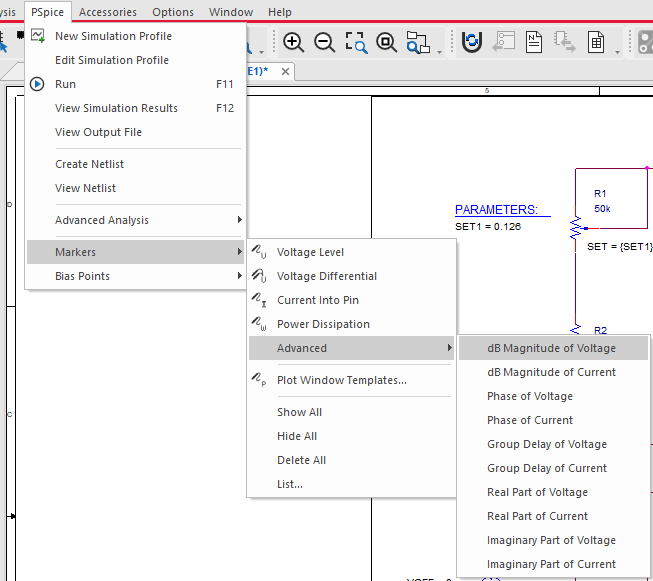
The loop gain subcircuit, consisting of two voltage sources and one current source, is as follows: Īnother approach of measuring the loop gain is to create a subcircuit for the device that is used to make the measurements, then reinsert this subcircuit into the circuit to be analyzed. Note: This approach of measuring loop gain relies on the voltage and current feedback theory as described in detail in A Guide to Circuit Simulation and Analysis Using PSpice, references and. The subcircuit was then used twice: once so that a voltage could be injected, and again so that a current could be injected. Previously, the circuit to be analyzed was treated as a subcircuit, with the signal path, broken to make measurements, pulled out. The circuit can be analyzed by injecting a current to measure the current gain, and a voltage to measure the voltage gain of the circuit. These results can be used to investigate whether the loop gain and phase are conducive to producing a stable oscillation. But, it is possible to use AC analysis to simulate high-Q circuits. Besides the long time required for the simulation to run, the data file created by the simulation will be extremely large.


For a crystal with moderately high-Q (20,000), it can take close to a million cycles before the oscillator reaches a steady state condition. And, because you must wait Q cycles, there is no way to force an oscillator to a steady state condition. The dominant time constant of the circuit, due to the Q of the crystal, means that the simulation must run a minimum of Q cycles before the circuit reacts. The length of time it takes to perform a transient simulation on a high-Q oscillator circuit makes simulation inefficient.


 0 kommentar(er)
0 kommentar(er)
